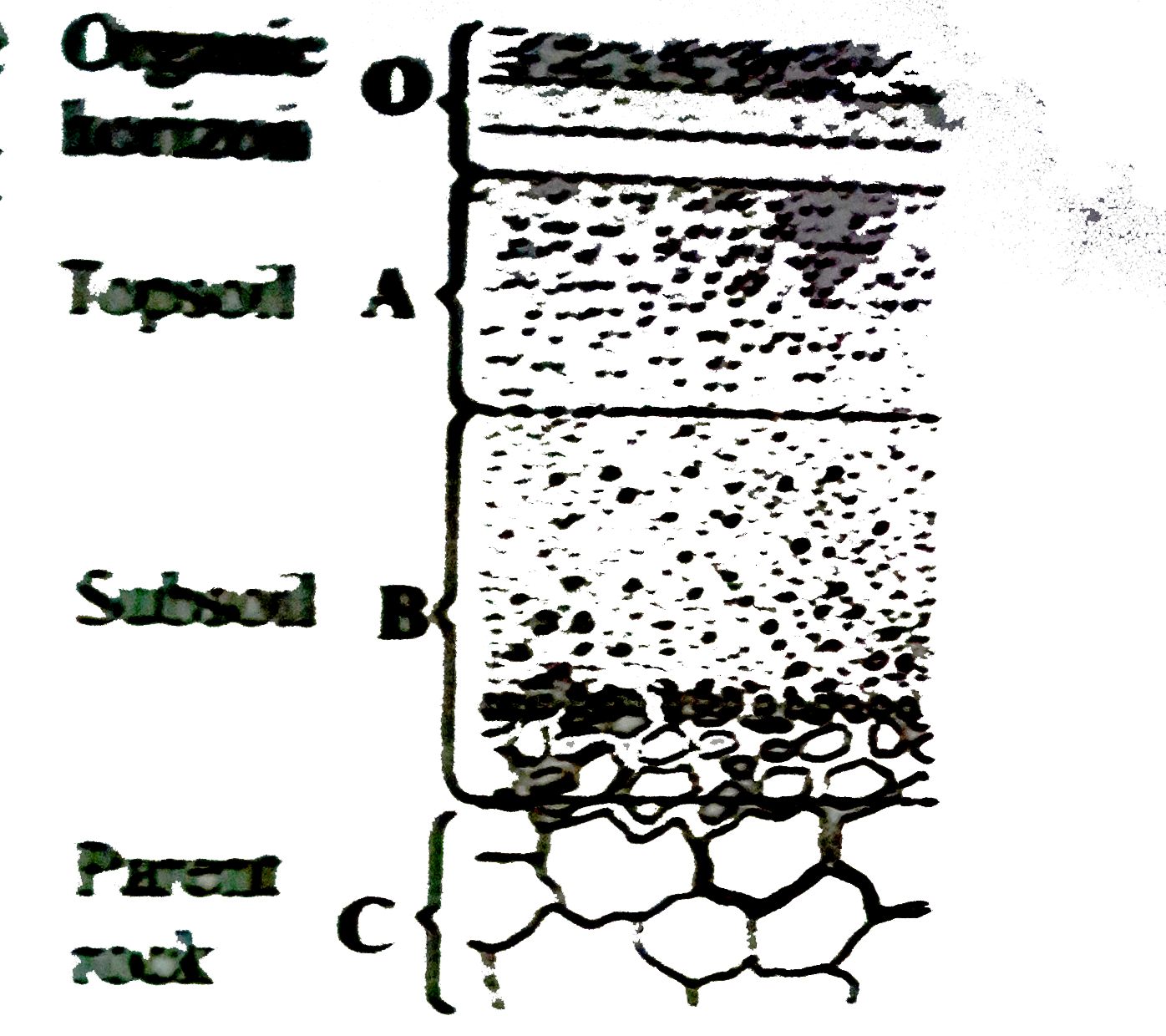In soil profile, the zone of eluviation is
O-zone
A-zone
B-zone
C-zone
The correct Answer is:B
To determine the zone of eluviation in a soil profile, we can follow these steps:
1. Understand Soil Profile: Soil is structured in layers called horizons, which are formed through the weathering of rocks and the accumulation of organic matter.
2. Identify the Zones: The soil profile typically consists of several zones:
- O Zone: This is the organic layer, rich in decomposed organic matter (humus).
- A Zone: Also known as the topsoil, it contains a mixture of organic material and minerals. This layer is crucial for plant growth.
- B Zone: Known as the subsoil, it is characterized by the accumulation of minerals leached from the upper layers.
- C Zone: This layer consists of weathered parent material from which the soil is formed.
3. Define Eluviation: Eluviation refers to the process of leaching or the removal of dissolved or suspended materials from one layer of soil to another, primarily due to water movement.
4. Locate the Zone of Eluviation: The zone where eluviation occurs is primarily the A Zone. This is where organic and inorganic materials are removed due to water movement, leading to the leaching process.
5. Conclusion: Therefore, the zone of eluviation in the soil profile is the A Zone.
Final Answer:
The zone of eluviation in the soil profile is the A Zone.
---
- O Zone: This is the organic layer, rich in decomposed organic matter (humus).
- A Zone: Also known as the topsoil, it contains a mixture of organic material and minerals. This layer is crucial for plant growth.
- B Zone: Known as the subsoil, it is characterized by the accumulation of minerals leached from the upper layers.
- C Zone: This layer consists of weathered parent material from which the soil is formed.
The zone of eluviation in the soil profile is the A Zone.
Topper's Solved these Questions
- BOOK - CENGAGE BIOLOGY ENGLISHCHAPTER - ORGANISMS AND POPULATIONSEXERCISE - ARCHIVES (Choose the correct options)29videos
ORGANISMS AND POPULATIONS
- BOOK - CENGAGE BIOLOGY ENGLISHCHAPTER - MICROBES IN HUMAN WELFAREEXERCISE - ARCHIVES26videos
MICROBES IN HUMAN WELFARE
- BOOK - CENGAGE BIOLOGY ENGLISHCHAPTER - REPRODUCTION IN ORGANISMS EXERCISE - ARCHIVES8videos
REPRODUCTION IN ORGANISMS
Similar Questions
Knowledge Check
- Question 1 - Select One
Given figure represents the soil profile, showing different layers/horizons of soil. Which of the following statements regarding the soil profile are not true ?

(i) Maximum roots of plants are found in horizon A.
(ii) Maximum nutrients are present in horizon B.
(iii) Horizon B contains partly weathered rocks.
(iv) Horizon C contains roots of the plants and mineral salts.A(i) and (ii)B(i) and (iii)C(ii) and (iv)D(i),(ii) and (iii)
Quiescent zone is the zone of
View Solutionzone of exclusion surrounds
View SolutionAfherive zone pf Dugesia is
View SolutionGrowth zone of Hydra is
View SolutionIn which of the following zones of atmosphere ozone layer is present ?
View SolutionWhich of the following is not a part of receptive zone of ommatidium in cockroach?
View SolutionName the two zones of kidney.
View Solution

